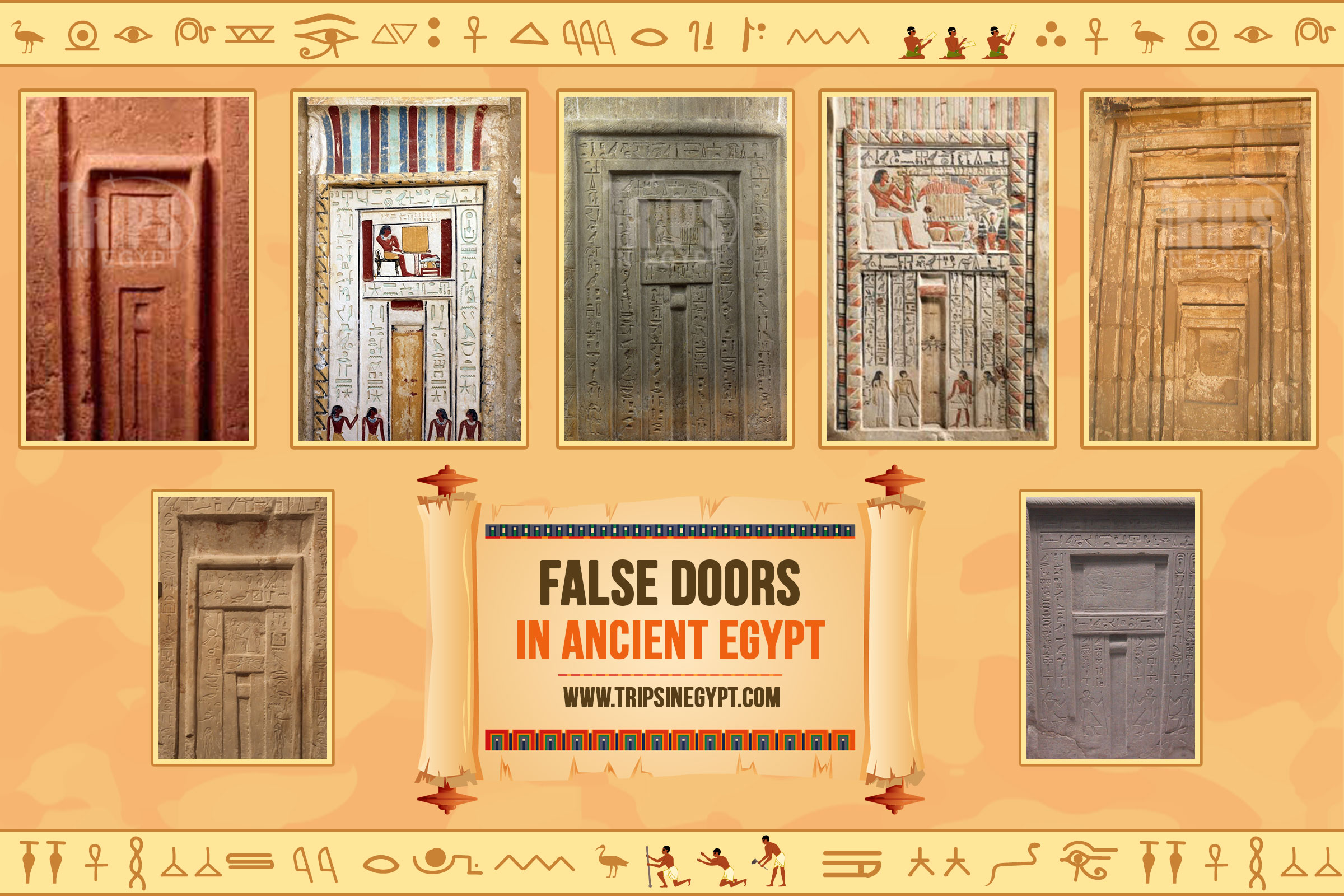
False Doors in Ancient Egypt
False doors in ancient Egypt were the embodiment of the rich imagination and the religious beliefs of the ancient Egyptians come to life in a combination of the most captivating and enchanting creations of divine art. The Ancient Egyptians believed that life is infinite and these gates were the key to passing your spiritual essence & soul into the world of the dead. These gateways to the Egyptian Underworld become a common element in all the tombs and mortuary temples across the lands of Egypt.
The false doors in ancient Egypt were the barrier between the mortal world and the realm of the soul where everyone will live in their true astral form and be one with the universe, embraced in total bliss and warmth. The false doors are known to be a magical work of art that carry a lot of meaning and facts about the funerary ways and way of life. In this article, we will discuss all the information and details concerning these epic false doors.

What Is the Purpose of A False Door in Ancient Egypt?
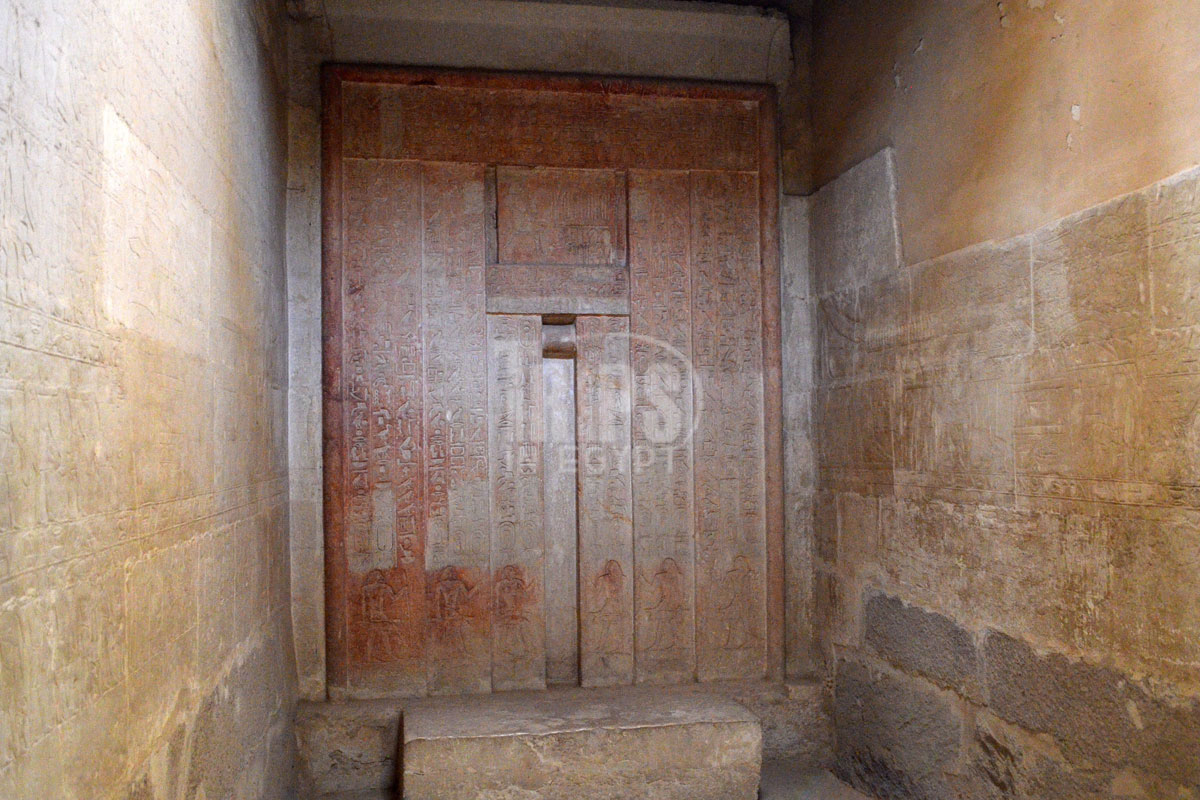
The false doors in ancient Egypt were a marvelous architectural element located across the ancient Egyptian mortuary temples and tombs across the New Kingdom of Egypt (1570 – 1050 BC). The false doors were known as "The Doors of Ka" as Ka means "Soul". This recessed niche was an incredible artistic representation of an imaginary door that held a number of marvelous images and inscriptions.
The false door is a majestic gateway that connects both the dead and living worlds where everyone can cross to the underworld and the deities and spirits of ancient Egypt can travel between the two worlds. One of the purposes of the false doors was to make offerings for the dead on a marvelous offering slab located in front of the door.
The location of the false doors was found on the western wall of the offering chamber and the funerary chapel as the ancient Egyptians have always associated the land of the dead with the direction of the west. During the New Kingdom (1570 – 1050 BC), the false doors were found in a chapel within the temple known as "The Hearing Ear" which enables everyone to communicate with their god and goddess. Every single member of the deceased had their own false door.
The deceased and the ancient Egyptian deities could make an interaction by receiving offerings and passings through the door. It was very common to find false doors located across the coffin sides and the cabinets of "Ushabti" or "Shawabti" who were magical servants.

The History of the False Doors in Ancient Egypt
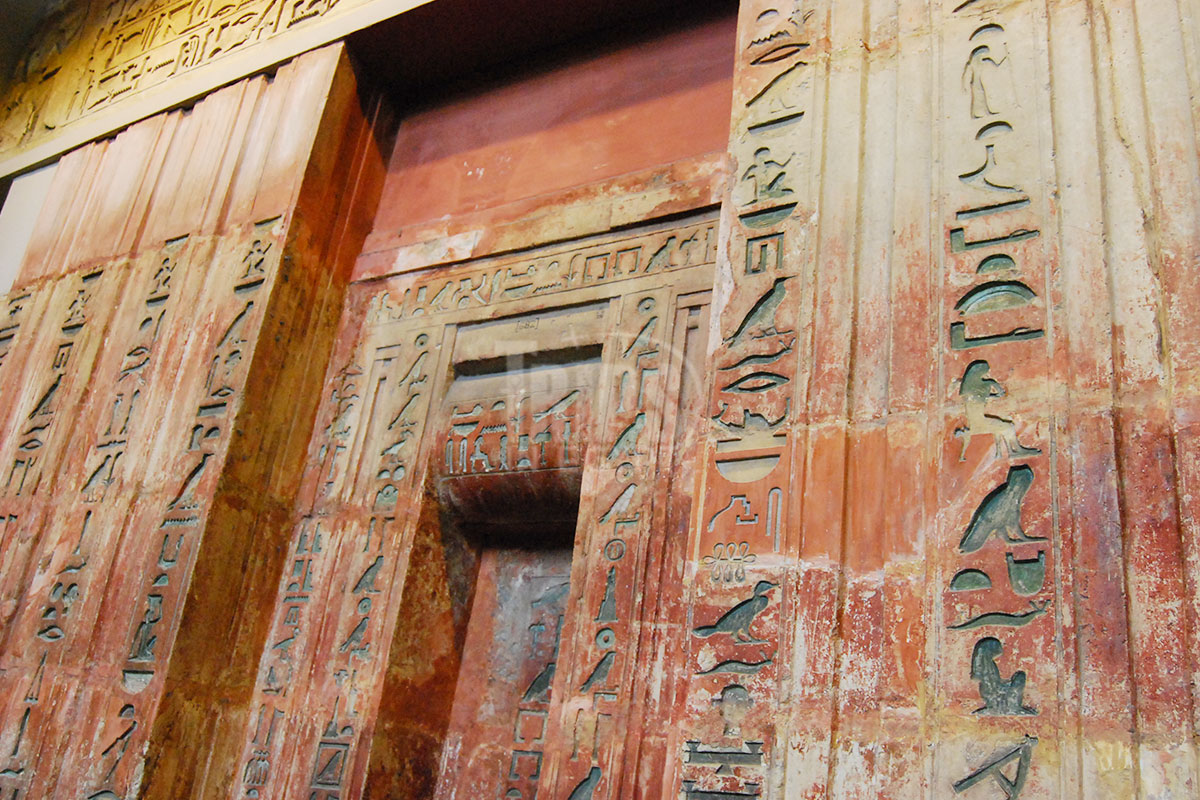
Many believe that the evaluation of false doors came from the "Palace Façade" which is an external architectural motif of the golden Mastaba tombs that became common with the tombs of the high elite officials during the Early Dynastic period (3100 - 2156 BC) as seen across the outer wall of Djoser’s step pyramid.
The first official use of the false door was during the 3rd dynasty of the Old Kingdom (2700 BC –2200 BC) as seen across sean Khui Ptah in the Teti cemetery at Saqqara. The use of false doors became very common across the universal tombs of the 4th, 5th, and 6th dynasties. During the 150 years reign of the 6th dynasty pharaohs of Pepi I, Merenre, and Pepi II, the false door underwent several changes across the panel's layout which enabled historians to date the tombs and the temples based on the different artistic styles of the false door.
Between 2181 BC and 2055 BC, the false doors diminished in popularity, and then it was replaced by stelae which became the main surfaces for carving funerary inscriptions. A number of false doors made their way on the coffins of the middle kingdom (2040 BC - 1782 BC) such as the Coffin of Nakhtkhnum which dates to the late Dynasty (1850–1750 BCE). The extensive artwork and inscriptions found across the coffins helped in the movement of the deceased's spirit across the world of the living and the afterlife.
Due to the Egypt-Mesopotamia cultural and economic relations of the 4th millennium BCE, Egyptian architecture was influenced by and even adopted some elements from the Mesopotamian Temples and the civic architecture of this time period. Some of these are the recessed niches found across the Mastaba tombs designed during the period of Naqada III around 3000 BC. It is unclear if the artistic transference between the ancient Egyptians and Mesopotamians was due to Mesopotamian workmen or imported Mesopotamian seals which inspired a number of Egyptian architects.
The artistic style of the false doors was found outside Egypt in the shape of painted doors across the interior of Roman Villas such as the villa of Julius Polybius in Pompeii. The design of the false doors spread all over the world as it was known as the gate of the gods in the Hayu Marca mountain region of Peru. The Tomb of the Charontes at Tarquinia in Italy and the tomb of the Augurs are other evidence of the expansion of the false doors designs beyond the borders of Egypt. A false door was discovered in 2018 inside a Hellenistic cemetery at the Al-Abd archaeological site in Alexandria which only shows the influence of the false door concept on foreign civilizations and cultures.

The Structure of the False Doors in Ancient Egypt
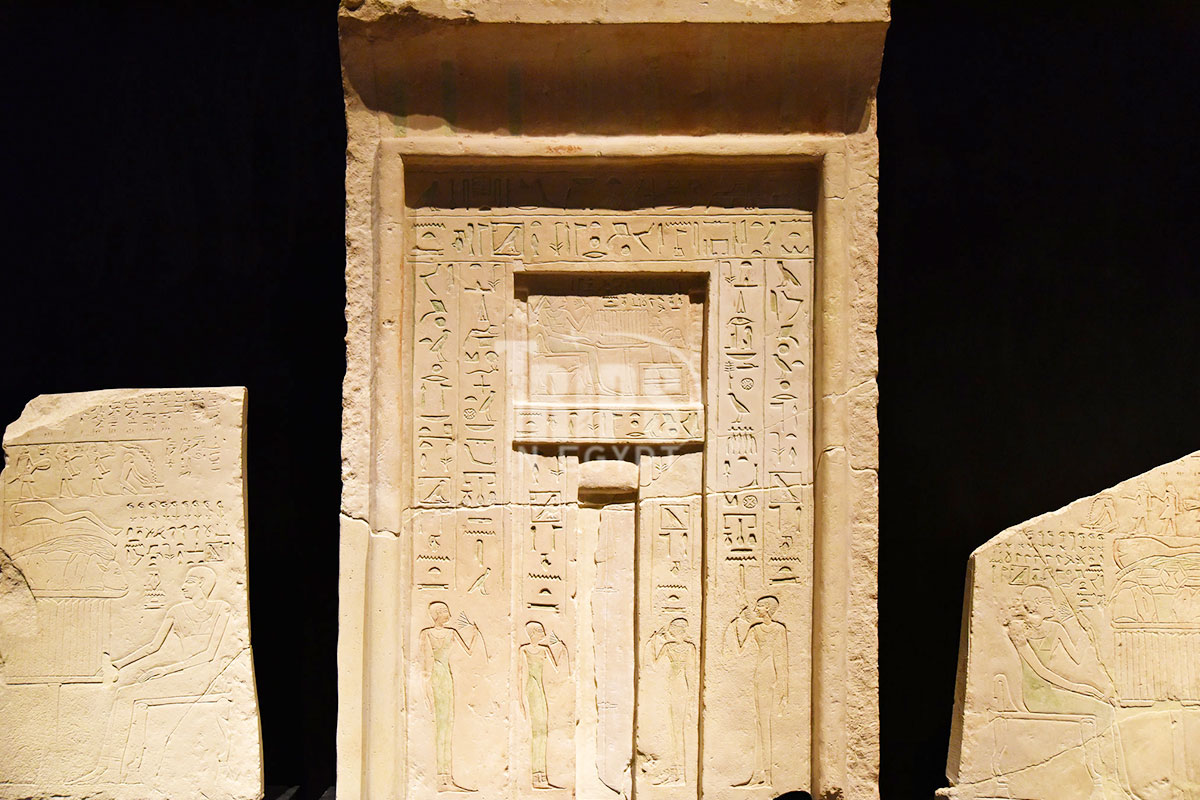
The structure of the false door is known to be carved from a single plank of wood or a stone block which was designed to function as a mythical door and not like any ordinary door. There is a flat panel or a niche found in the center of the false door plus there are a number of arranged door jambs that exhibit an illusion of depth plus a series of frames, a passageway, or a foyer.
There is a semi-cylindrical drum that is carved on top of the central panel directly to represent a reed-mat which was made to shut the rear doors. The false door was made to have a combination of lintels and moldings which offers a magical scene displaying an offering that shows the dead located in front of the offering table which was carved on top of the door’s center. They took the shape of a "Hotep" hieroglyph which represents a loaf on a mat and the offering formula was usually inscribed on the deceased.
The offering tables were created of stone and held a number of depictions and decorations of a number of offerings which include beer, bread, fowl, and ox plus depressions were added to receive gifts. The owners of the tomb even carved statues in their own images located within the false door’s central niche.

Inscriptions of the False Doors in Ancient Egypt

The false doors held a number of false doors which were covered with a number of inscriptions that belonged to the deceased which included his name and titles plus the typical Offering formulas. The instructions would immortalize the deceased virtues and express happy wishes for the afterlife.
The inscriptions also included a curse that will harm anyone who would try to harm the deceased plus fortune and bliss will be bestowed on those who made offerings. Found on the tomb of Redi-ness at Giza are texts that read the following”
“Never did (I) do any evil thing against people. (As for) those who will do something against this, it shall be protected from them”.. (I) have constructed this my (tomb) with my own means. It is the god who will judge (my) case along with him who does anything against it.”
Another example is the false door of Ankhires which reads:
The scribe of the house of the god's documents, the stolist of Anubis, follower of the great one, follower of Tjentet, Ankhires.
The lintel reads:
His eldest son it was, the lector priest Medunefer, who made this for him.
The left and right outer jambs read:
An offering which the king and which Anubis,
who dwells in the divine tent-shrine, give for burial in the west,
having grown old most perfectly.
His eldest son it was, the lector priest Medunefer,
who acted on his behalf when he was buried in the necropolis.
The scribe of the house of the god's documents, Ankhires.

Conclusion
The false doors are another gem of divine art that stood the test of time to shed light on the cultural and religious innovation of the ancient Egyptian civilization. All our Egypt private tours and Nile cruises will offer direct access to these magical wonders that will provide a clear vision of bliss and wonder.
Great vacation for 4 days in Cairo Egypt accompanied by an e...
Duration
4 Days / 3 Nights
Availability
Everyday
An Incredible 5 days Cairo & Alexandria tour package to expl...
Duration
5 Days / 4 Nights
Availability
Everyday
Explore Egypt's ancient wonders on a 6 days vacation to Cair...
Duration
6 Days / 5 Nights
Availability
Everyday
Breathtaking 7 days Cairo, Luxor & Hurghada holiday to explo...
Duration
7 Days / 6 Nights
Availability
Everyday
FAQ
Did Mastabas Have False Doors?
The false door is known to be expected in mastabas of the Old Kingdom (2686-2181 BC).
What Should I Wear While Being in Egypt?
You should wear whatever you want. It is advised to wear something light from cotton or linen, comfortable and put on sunblock during your time in Egypt in the summer and wear comfortable footwear like a closed-toe shoe to sustain the sandy terrain.
What to Pack for Your Egypt Tour?
You should bring a brimmed hat and sunglasses if you not used to the Egyptian sun &pack everything you could ever need and put in a small bag so you could move easily between your destinations.
Are All Nile Cruises Available at Any Time?
Yes, it is available all years. as the Nile from Aswan to Luxor takes three to four days of sailing on Monday, Wednesday and Friday for the total cost of 600$ and the Nile cruise from Luxor to Aswan take four to five days in Saturday, Monday and Thursday for the coast of 650$.
Why book Trips in Egypt?
We have experience in vacation planning for more than 10 years & our staff consists of the most professional operators, guides and drivers who dedicate all of their time & effort create the perfect vacation. All of our tours are customized by Travel, Financial & Time advisors to fit your every possible need during your time in egypt. we always keep in mind that your safety & comfort are our main priority until you return home.
Is it safe to travel to Egypt?
Yes, it is absolutely safe to travel to egypt, You will feel secure in Egypt as the current atmosphere of the country is very peaceful after the government took powerful measures like restructuring the entire tourist police to include all the important and tourist attractions in Egypt and construct an entire environment dedicated for ensuring the lives of all tourists.
What are Egypt's Visa Requirements?
They are very simples, If you want to apply for a Visa On Arrival that lasts for 30 days then you should be one of the eligible countries(check the link), have a valid passport with at least 6 months remaining and pay 25$ USD entry fee in cash. As for the E-Visa for 30 days, you should have a valid passport for at least 8 months, complete the online application, pay the e-visa fee then print the e-visa to later be presented to the airport border guard. You could be one of the countries eligible for a free visa for 90 days.
What is the Weather is Like?
The temperature of Egypt ranges from 37c to 14 c, Summer in Egypt is somehow hot and winter is cool and mild but sometimes it becomes cold at night. The average of low temperatures vary from 9.5 ¡ÆC in the wintertime to 23 ¡ÆC in the summertime and average high temperatures vary from 17 ¡ÆC in the wintertime to 32 ¡ÆC in the summertime while the temperature is moderate all along the coasts.
What is the Best Time of Visit Egypt?
It is known the best time to travel to Egypt is in the winter from September to April as the climate becomes a bit tropical, a warm atmosphere with a winter breeze. You will also be notified a week before your trip if the weather is unsafe or if any changes have been made.
Should I Give Tips in Egypt?
It is totally up to you, but if you choose to you can tip the servers at your restaurant 5-10% by handing it to them directly and 5 Egyptian Pounds as a general tip of anyone.
Can I Enter the Pyramids?
Yes, you can enter the pyramids for the small fee of 20$.
How to Enjoy Egypt During Ramadan?
Ramadan is a special time of year for Muslims that should be celebrated by non-Muslims and feel the essence of the Islamic culture. You can fast with the Muslim or just observe but you are always welcome to join the celebrations and festivals.

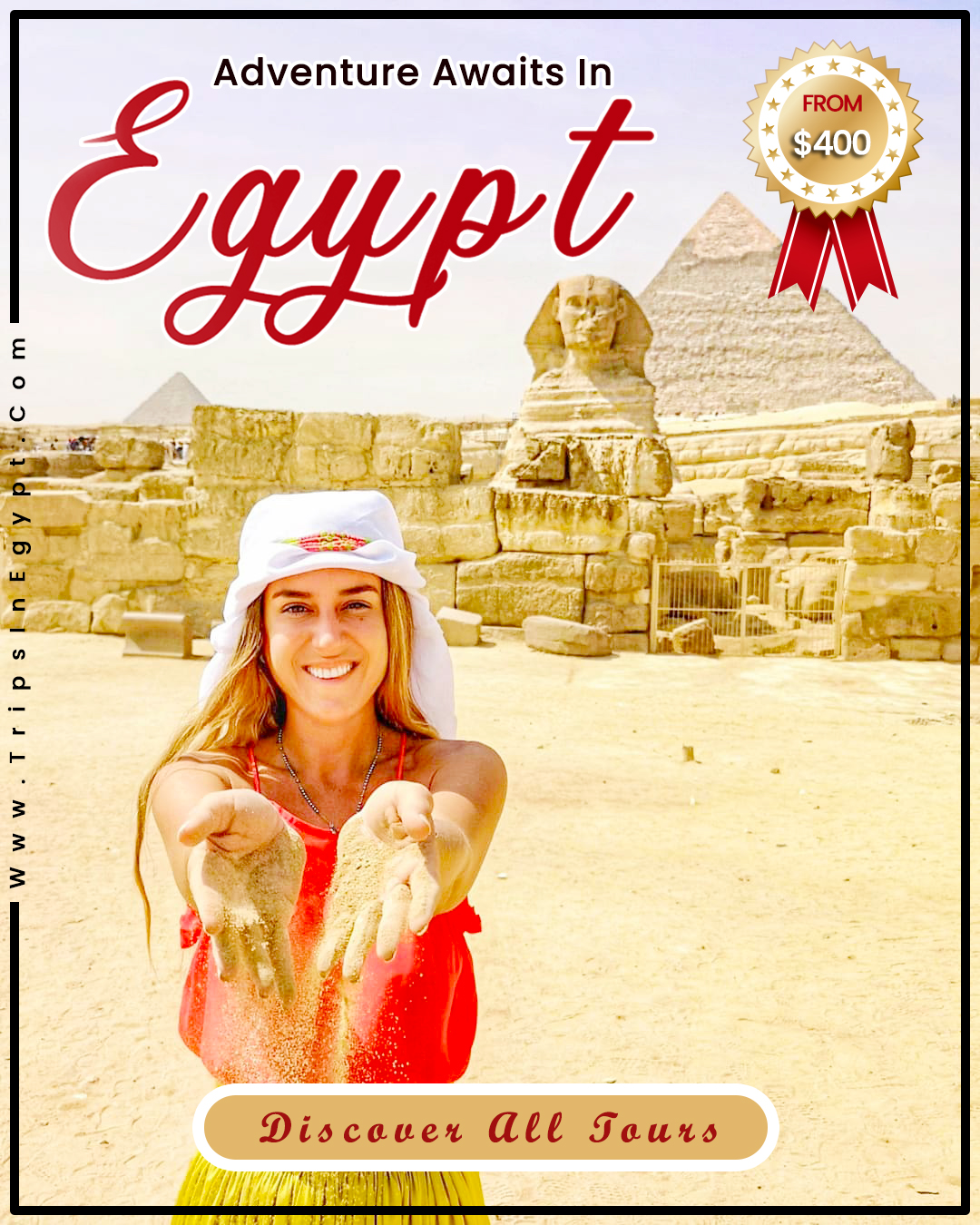
Share Your Comment